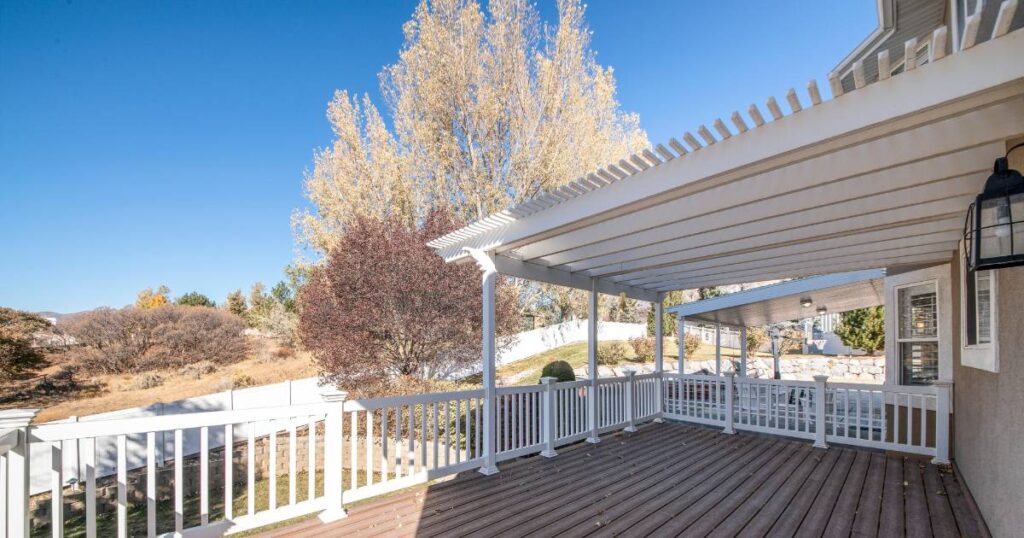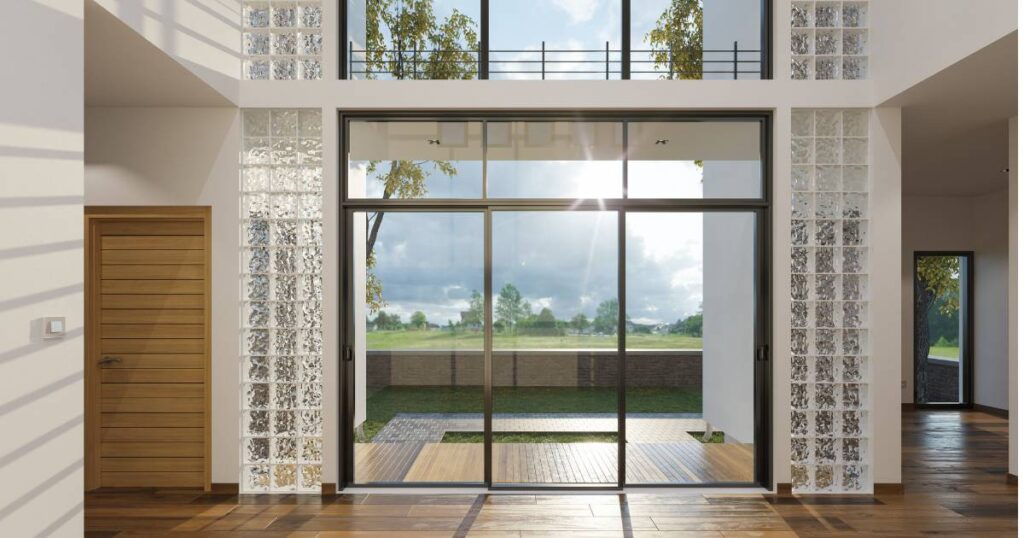Home additions can be transformative to increase home value while providing you with the extra space you need. These additions go beyond aesthetic improvements; they cater to homeowners’ and potential buyers’ evolving needs and preferences.
By carefully planning and executing home additions, you can enhance your home’s functionality and appeal, creating a more desirable living environment. Whether it’s expanding living areas, adding outdoor features, or upgrading key elements, home additions offer many opportunities to increase home value and give you the space you deserve.
Exterior Siding Replacement
Exterior siding replacement is a powerful home addition that can impact your home’s aesthetics and overall appeal. It can also increase home value.
Significance of Siding in Home Aesthetics
Siding is a protective covering for your home’s exterior to its aesthetic appeal. The siding material and design can influence the style and character of your home. It’s the first impression visitors and potential buyers get when approaching your property, making it a vital aspect of curb appeal.
Various Siding Options Available
Vinyl Siding: Vinyl is a cost-effective and low-maintenance option. It comes in various colors and styles, providing versatility and customization options for homeowners.
Fiber Cement Siding: This durable and weather-resistant material offers the appearance of wood, stucco, or masonry but with minimal maintenance requirements. It is known for its longevity and ability to withstand harsh elements.
Wood Siding: Wood siding brings a natural and timeless charm to a home. It can be crafted from different types of wood, such as cedar or redwood, offering a warm and inviting aesthetic.
Considerations for Selecting the Right Siding
Climate: Consider the climate and weather conditions in your area. Some siding materials perform better in specific climates, providing better resistance against moisture, heat, or cold.
Maintenance: Determine the level of maintenance you’re willing to invest in. Vinyl siding requires the most minor maintenance, while wood siding may require periodic painting or sealing to maintain its appearance.
Aesthetics: Choose a siding material that complements the architectural style of your home and aligns with your personal taste. Consider color options and textures to achieve the desired look.
Budget: Evaluate the cost of materials and installation, ensuring it fits within your budget while considering long-term durability and value.
Adding a Patio Cover

Adding a patio cover to your outdoor space is a fantastic home addition that offers numerous benefits.
Benefits of a Patio Cover
Shade: A patio cover provides much-needed shade, allowing you to enjoy outdoor space even during hot summer days. It shields you and your furniture from direct sunlight, creating a comfortable and cool area to relax or entertain guests.
Outdoor living space: A patio cover extends your living space outdoors, effectively creating an additional functional area for various activities. It allows you to enjoy the fresh air, dine al fresco, host gatherings, or create an outdoor lounge area.
Protection from the elements: A patio cover protects against rain, wind, and other weather conditions. It helps to keep your outdoor furniture, grill, and other belongings sheltered and prevents them from getting damaged or exposed to the elements.
Material Options for Patio Covers
Wood: Wood patio covers provide a natural and warm aesthetic. They can be constructed using various types of wood, such as cedar or redwood, which offer durability and weather resistance when adequately maintained.
Aluminum: Aluminum patio covers are lightweight, low maintenance, and resistant to rust and corrosion. They are available in various colors and styles, offering versatility and durability.
Fabric: Fabric patio covers, such as canvas or polyester, are popular for their flexibility and affordability. They can be retractable or fixed, providing a softer, more customizable shade solution.
Considerations when Choosing a Patio Cover Design
Functionality: Determine how you plan to use your patio cover. Consider factors such as the desired level of shade, privacy, and protection from the elements to select a design that suits your needs.
Aesthetic appeal: Choose a patio cover design that complements the architectural style of your home and enhances the overall visual appeal of your outdoor space.
Maintenance: Consider the maintenance requirements of different materials. Wood may require periodic staining or sealing, while aluminum or fabric covers are generally low-maintenance.
Local regulations and permits: Check with your local authorities regarding any regulations or permits required for installing a patio cover to ensure compliance with building codes.
Installing Artificial Grass

Installing artificial grass can be a game-changer for your outdoor space.
Advantages of Artificial Grass over Natural Grass
Low maintenance: Artificial grass eliminates the need for mowing, watering, fertilizing, and weeding. It requires minimal upkeep, saving you time, money, and effort in lawn maintenance.
Durability: Artificial grass is designed to withstand heavy foot traffic and remain lush and green even in high-traffic areas. It is more resistant to wear and tear compared to natural grass.
Water conservation: Unlike natural grass, artificial grass doesn’t require regular watering, reducing water consumption and helping conserve this valuable resource.
Allergy-friendly: Artificial grass doesn’t produce pollen, making it an excellent option for individuals with grass allergies or sensitivities.
Consistent appearance: Artificial grass maintains its vibrant green color throughout the year, regardless of weather conditions or seasonal changes. It provides a consistently lush and attractive appearance.
Maintenance Requirements for Artificial Grass
Regular brushing: Brush the artificial grass periodically to keep the fibers upright and distribute the infill material evenly.
Cleaning: Remove debris, leaves, and pet waste from the surface. Rinse the grass occasionally to remove dust or dirt.
Pet care: If you have pets, regularly remove solid waste and hose down the affected area to maintain cleanliness.
Periodic inspection: Inspect the artificial grass for any signs of damage or wear. Address any repairs or replacements promptly to prevent further issues.
Replacing Windows

Windows play a role in a home’s aesthetics and energy efficiency. They contribute to the overall architectural design and can enhance the curb appeal of a property.
Regarding energy efficiency, windows are key elements in preventing heat loss or gain. Well-insulated windows can improve a home’s thermal performance, reducing the reliance on heating and cooling systems and ultimately lowering energy consumption and costs.
Different Window Styles and Materials
Vinyl: Vinyl windows are popular due to their affordability, low maintenance requirements, and energy efficiency. They are available in various styles and colors, making them versatile and suitable for architectural designs.
Wood: Wood windows offer a classic and timeless appeal, adding warmth and character to a home. They can be customized and provide excellent insulation properties.
Aluminum: Aluminum windows are known for their strength, durability, and slim profiles. They are resistant to weathering and require minimal maintenance.
Energy-Efficient Window Options
Double-glazed windows contain two glass panes with a sealed air or gas-filled space between them. This design improves insulation and reduces heat transfer, making them more energy-efficient than single-pane windows.
Low-E coatings are thin, virtually invisible layers applied to the glass surface. They reflect heat and UV rays while allowing natural light to pass through, helping to maintain a comfortable indoor temperature and protect furnishings from sun damage.
Considerations when Selecting New Windows
Size and style: Consider your home’s size and architectural style when selecting new windows. Choose windows that complement the overall design aesthetic and maintain consistency with the existing or desired aesthetic theme.
Features and functionality: Consider the desired functionality of the windows, such as ventilation options, ease of operation, and safety features like locks or impact-resistant glass for areas prone to severe weather conditions.
Energy efficiency: Look for windows with high energy-efficiency ratings, such as those certified by ENERGY STAR. Consider the U-factor, Solar Heat Gain Coefficient (SHGC), and air leakage ratings to ensure optimal thermal performance.
Budget: Determine your budget and prioritize features and materials accordingly. Remember that investing in energy-efficient windows can result in long-term energy savings and potentially increase the value of your home.
Paint Walls with Elastomeric Paint
Elastomeric paint is a specialized type of paint that contains elastomeric polymers. These polymers allow the paint to stretch and contract with the substrate, providing excellent flexibility and durability.
Waterproofing: Elastomeric paint forms a waterproof barrier on the surface, preventing water penetration and protecting the underlying substrate from moisture-related damage.
Crack-bridging capability: The elasticity of elastomeric paint allows it to bridge small cracks and gaps in the walls, minimizing the chances of water infiltration and providing a more uniform and aesthetically pleasing finish.
Enhanced durability: Elastomeric paint is highly resistant to weathering, fading, and peeling, making it suitable for exterior surfaces exposed to harsh climatic conditions.
UV protection: Elastomeric paint contains additives that provide UV resistance, protecting the walls from sun damage and preventing color fading over time.
Suitable Surfaces for Elastomeric Paint Application
Exterior masonry walls: Elastomeric paint is ideal for concrete, stucco, or brick surfaces, providing a protective and long-lasting finish.
Exterior wood surfaces: Elastomeric paint can be used on exterior wood sidings or trim, offering enhanced durability and resistance to moisture and cracking.
Interior high-moisture areas: Elastomeric paint can be used in high-moisture areas such as bathrooms or kitchens where additional waterproofing and durability are desired.
Considerations for Color Selection and Finishes
Color selection: Consider the overall aesthetic of your space and choose a color that complements the existing elements or desired theme. Remember that elastomeric paint is available in various colors, including custom tinting options.
Finishes: Elastomeric paint is commonly available in a smooth finish, but textured finishes are also available for added visual interest or to match existing textures on the walls.
Bi-fold Doors and Windows

Bi-fold doors and windows consist of multiple panels connected by hinges that allow them to fold and stack neatly against one side, creating a wide opening that seamlessly connects indoor and outdoor spaces. They are typically made of glass, providing an unobstructed view and maximizing natural light.
Advantages of Bi-fold Doors and Windows
Abundance of natural light: Bi-fold doors and windows feature large glass panels, allowing ample natural light to flood the interior, creating a bright and inviting atmosphere.
Space-saving: The folding mechanism of bi-fold doors and windows eliminates the need for swing space, making them an excellent option for areas with limited space. They provide a wide opening without encroaching on the room’s interior or exterior areas.
Versatility: Bi-fold doors and windows can be installed in various home areas, such as living rooms, dining areas, or room dividers.
Indoor-outdoor connectivity: By opening the bi-fold doors or windows, you can seamlessly merge your indoor and outdoor living spaces, creating a harmonious flow and expanding the overall usable space.
Considerations when Selecting Bi-fold Doors and Windows
Materials: Bi-fold doors and windows are available in different materials, such as aluminum, timber, or uPVC.
Security features: Look for bi-fold doors and windows that incorporate robust locking systems and security features to ensure the safety of your home.
Weather resistance: Ensure that the chosen bi-fold doors and windows are designed to withstand the local climate conditions, including wind, rain, and extreme temperatures.
Glass options: Consider the glass options available, such as double glazing for enhanced energy efficiency or laminated glass for added security and noise reduction.
Professional in Home Improvement Projects
Seeking professional assistance for home improvement projects offers numerous benefits beyond the initial investment. The expertise and experience professionals bring to the table ensure that projects are executed with precision, quality, and efficiency.
Professionals provide invaluable guidance during the design and planning stages, helping homeowners transform their vision into a well-executed plan that meets their goals and budget. Their project management skills and coordination ensure that tasks are completed on time and within budget, alleviating the stress and burden on homeowners.
By enlisting professional assistance, homeowners can achieve superior results, save time and money in the long run, and enhance the value and enjoyment of their homes. Whether it’s a small renovation or a major remodel, the expertise and professionalism of professionals contribute to the overall success and satisfaction of home improvement projects.



























